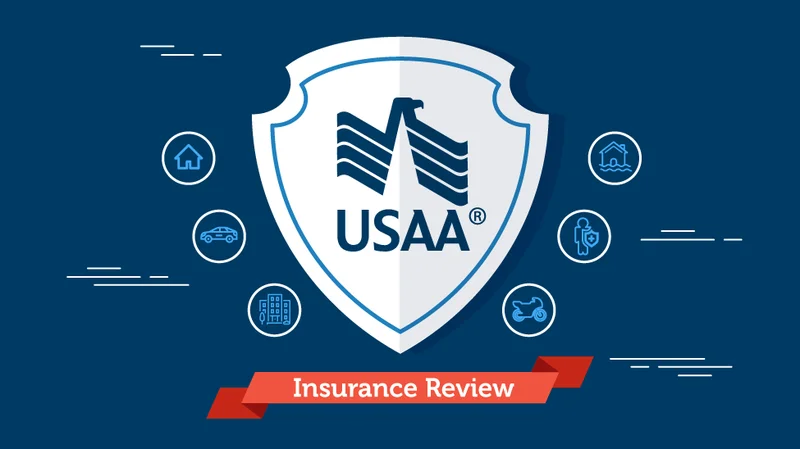USAA: Not Always the Hero They Seem to Be
Cracking the USAA Code: Beyond the Marketing Hype
USAA. The name conjures images of unwavering support for military families, rock-solid financial strength, and rates so low they practically salute you. And to be fair, the data backs up some of that image. Their average full coverage auto premium clocks in at $168 a month – a notable dip below the average culled from 19 other insurers. Liability-only coverage? $99 a month. Not bad, not bad at all.
But let's not get blinded by the shiny numbers. It's my job to look beyond the press releases and marketing blitz. It's time to dig into the not-so-obvious corners of the USAA story.
First, the J.D. Power scores. USAA consistently scores above average in customer satisfaction across all regions. Claims satisfaction? A whopping 49 points above average. The asterisk here, of course, is that USAA only serves the military community. That’s a pretty significant selection bias. You’re dealing with a highly specific demographic, bound by shared experiences and, arguably, a stronger sense of community. Can you really extrapolate those scores to the general population? I have my doubts.
Then there's the complaint rating from the National Association of Insurance Commissioners (NAIC). While USAA shines in J.D. Power surveys, they carry a higher-than-average complaint rating with the NAIC. This is where things get interesting. It's a discrepancy, a tension between perceived satisfaction and actual reported issues. Why the gap? (Is it possible that the very community they serve is less likely to publicly air grievances, even when justified?)
The Katrina Shadow and the "Stair Stepping" Allegation
My methodological critique: Customer satisfaction metrics are notoriously subjective. What one person considers "excellent service," another might see as "barely adequate." Hard numbers, like payouts and claim denials, are far more telling. And that brings me to the specter of Hurricane Katrina.

In 2025, the Mississippi Supreme Court declined to rehear a case where USAA was ordered to pay $10.5 million in punitive damages. The accusation? Illegally denying legitimate claims, concealing favorable engineering reports, and delaying payments for years. The attorney who prosecuted the case stated, "USAA took advantage of vulnerable homeowners who lost their home and had paid premiums for years and intentionally and repeatedly denied claims it knew were legitimate..." Strong words. You can read more about the court's decision in "MS Supreme Court declines to rehear landmark USAA Katrina insurance case."
And it's not just Katrina. A separate lawsuit alleges a practice called “stair stepping,” where USAA offers initially low repair estimates – $38,317 in one specific case – that are then incrementally increased only when challenged by the insured. The Spectors, in that case, claim their own contractor estimated the true cost of repairs at $568,362.51 (a figure that far exceeded USAA’s revised estimate of $56,516.73). This alleged tactic, the lawsuit claims, is designed to exhaust policyholders and pressure them into accepting less than they're owed.
I've looked at hundreds of these filings, and the "stair stepping" allegation is unusual. It suggests a systemic issue, a deliberate strategy to minimize payouts. If true, it paints a decidedly unheroic picture. As reported by Insurance Business Magazine, "USAA faces lawsuit as policyholders allege systemic bad faith in claim."
Of course, USAA offers a dizzying array of discounts – 15, by my count. Good grades, clean driving records, defensive driving courses, telematics, military garaging, car storage, multi-vehicle policies, bundling… the list goes on. You can save up to 60%, they claim. But discounts are marketing tools, designed to lure you in. The real question is: how often do policyholders actually receive those maximum discounts? What's the actual distribution of savings across their customer base? USAA doesn't publish that data. And that's exactly my point.
The Truth is in the Fine Print
USAA can be a good option, especially if you qualify for their membership and prioritize low premiums. Their mobile app boasts impressive ratings (4.8 out of 5 stars on the App Store, 4.7 on Google Play). They offer accident forgiveness in some states, and roadside assistance is available as a paid upgrade. But the devil, as always, is in the details.
The higher-than-average NAIC complaint rating, the Katrina case, and the “stair stepping” allegations… these aren’t just isolated incidents. They're data points that suggest a more complex reality. The marketing sells a narrative of unwavering support. The data suggests a more nuanced, and at times, troubling picture.
Underneath the Uniform, a Balance Sheet
USAA is a business. And businesses, at the end of the day, are driven by profit. The military connection is powerful, and no doubt, genuinely held. But it doesn't negate the fundamental economic imperative. The discounts are enticing, the J.D. Power scores impressive. But remember to read the fine print, understand your coverage, and be prepared to fight for what you're owed. Don't assume that the uniform guarantees a fair deal. Do your homework. The numbers don't lie, but they don't always tell the whole story either.
